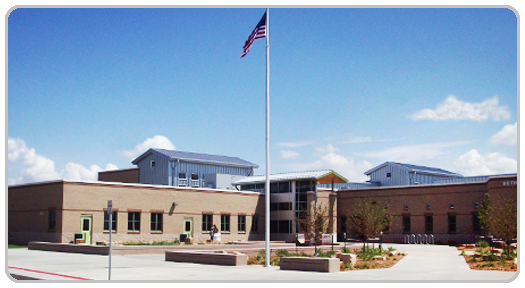 Electronic Access Control is Foundation for Effective School Security System
Electronic Access Control is Foundation for Effective School Security System
Flexible PCSC system offers centralized control while meeting the needs of 47 buildings. When voters in Colorado’s Poudre School District approved a bond measure in 2000 to fund a new school security system, they made a clear statement about the value they place on keeping the district’s 24,000 students safe.
“We were looking for a way to control who was in our buildings, to identify visitors, deter vandalism and increase the overall feeling of safety in our buildings.”
“The community has charged us with the care of their kids, and while our primary focus is educating kids, they need to feel safe before they can learn,” says Norm Bastian, security manager for the district, which serves Larimer County. “We were looking for a way to control who was in our buildings, to identify visitors, deter vandalism and increase the overall feeling of safety in our buildings.”
While his mission was clear, Bastian faced the challenge of finding an access control system that could effectively balance that commitment to safety with the reality of life within the K-12 district’s 47 schools. That reality included open junior high and high school campuses in which students entered and exited buildings between classes; site-based management with different security needs at different schools; and community use of district facilities after hours. That reality also reflected a culture that valued openness. “A lot of the principals felt a school is a public building that should be inviting and that parents should feeel that they could come visit at any time,” Bastian says.
To address the challenges presented by those realities, the Poudre School District sought an access control system that, among other things, could be controlled from a central location and programmed to accomodate the individual needs of each school.
After reaching out to several vendors, Bastian found that PCSC of Torrance, Calif., a leading manufacturer of products and services for electronic access control, could best help the district meet its security needs. Once of the key requirements was flexibility, allowing for varied schedules in which some schools were in session on a particular day while others were not.
All employees have a proximity card that doubles as their school ID. People authorized to enter can open locked exterior doors by waving their card in front of the proximity reader. In new schools, visitors enter a vestibule through a door that leads directly into the school office, where they are greeted and given a visitor’s badge. Proximity cards also allow the district to control access to certain areas that house valuable equipment, such as computer labs, media centers and data/communication rooms.
The centralized system allows the district to easily grant new employees access to the appropriate school buildings and to just as easily remove access for those who leave. Gone are the days when employees of the after-school daycare program propped open the door to let the children play outside; they, too, have proximity cards allowing them access during specific hours.
Until recently, exterior doors at the junior high and high schools were scheduled to automatically unlock during passing periods so that students could enter and exit freely between classes. In the wake of recent incidents around the country, the district decided to tighten security, so the doors now remain locked between periods.
A key feature enables administrative personnel to override time schedules and immediately lock all exterior doors during an emergency. Only designated staff can unlock doors when a school is in lockdown.
In developing its security program, the Poudre School District also had an eye on the future. The PCSC access control system can be upgraded to allow biometric readers, and a pilot program using fingerprint identification is under way.
“Administrators and staff realize that security and safety is an integral part of their responsibility,” says Bastian. Everybody is very thankful that we have the systems in place.”





